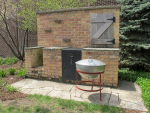Kyle in Woodstock
TVWBB Guru
I briefly mentioned this in the catch-all thread, but thought I would make a separate thread for this.
Viking 41" nat gas grill with "True Sear". Model VGIQ4103RELSS
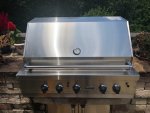
My buddy has this at his house and it hasn't worked in a couple years. It appears to be a really nice, big expensive grill that is built-in to his deck with stone. He is not the most handy guy, so I told him I'd help him get it working again.
I was up there on the weekend of the 4th and very briefly looked at it, but really only looked under the lid and noticed everything was disassembled.
He had a service guy come take a look and he gave him some insane quote to fix it of $1,500 or more. Highway robbery.
The guy did tell him that he needed a new manifold, and it is part number 20 on the diagram below. Sorry for all the separate images. I didn't know how to attached a PDF, so I did screenshots.
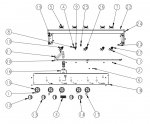


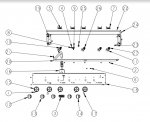

Just want to get some suggestions from you guys on what tools or supplies I should bring up with me when I go to help him fix this.
- Adjustable wrenches
- Vice Grips
- Socket set
- Screwdrivers
- Liquid Wrench (for stubborn-stuck bolts)
- Hammer
- Can of high temp BBQ paint. Not for cosmetics, but in case I need to spray some potential rusty areas, not in cooking area, but in the manifold/valve area.
I'll probably run by Home Depot and pickup a handful of SS nuts/bolts/screws in the sizes mentioned on this diagram, just in case I see any that need replacing or are rusted away.
Should I bring any type of thread sealant?
Any other tools?
Was thinking I might need to bring a few "black pipe" fittings in case some of those are rusted bad?
I'm kind of going into this blind. Like I mentioned, he's not very handy, so I'm really not sure what all needs to be fixed/replaced, but just trying to cover my bases as far as bringing the right tools up and a guess on the supplies. His cabin is in the middle of the woods and is about 1.5 from my house.
And just for fun a picture of the view from his top deck and one of his pool.

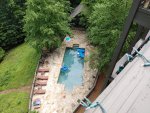
Viking 41" nat gas grill with "True Sear". Model VGIQ4103RELSS

My buddy has this at his house and it hasn't worked in a couple years. It appears to be a really nice, big expensive grill that is built-in to his deck with stone. He is not the most handy guy, so I told him I'd help him get it working again.
I was up there on the weekend of the 4th and very briefly looked at it, but really only looked under the lid and noticed everything was disassembled.
He had a service guy come take a look and he gave him some insane quote to fix it of $1,500 or more. Highway robbery.
The guy did tell him that he needed a new manifold, and it is part number 20 on the diagram below. Sorry for all the separate images. I didn't know how to attached a PDF, so I did screenshots.




Just want to get some suggestions from you guys on what tools or supplies I should bring up with me when I go to help him fix this.
- Adjustable wrenches
- Vice Grips
- Socket set
- Screwdrivers
- Liquid Wrench (for stubborn-stuck bolts)
- Hammer
- Can of high temp BBQ paint. Not for cosmetics, but in case I need to spray some potential rusty areas, not in cooking area, but in the manifold/valve area.
I'll probably run by Home Depot and pickup a handful of SS nuts/bolts/screws in the sizes mentioned on this diagram, just in case I see any that need replacing or are rusted away.
Should I bring any type of thread sealant?
Any other tools?
Was thinking I might need to bring a few "black pipe" fittings in case some of those are rusted bad?
I'm kind of going into this blind. Like I mentioned, he's not very handy, so I'm really not sure what all needs to be fixed/replaced, but just trying to cover my bases as far as bringing the right tools up and a guess on the supplies. His cabin is in the middle of the woods and is about 1.5 from my house.
And just for fun a picture of the view from his top deck and one of his pool.




